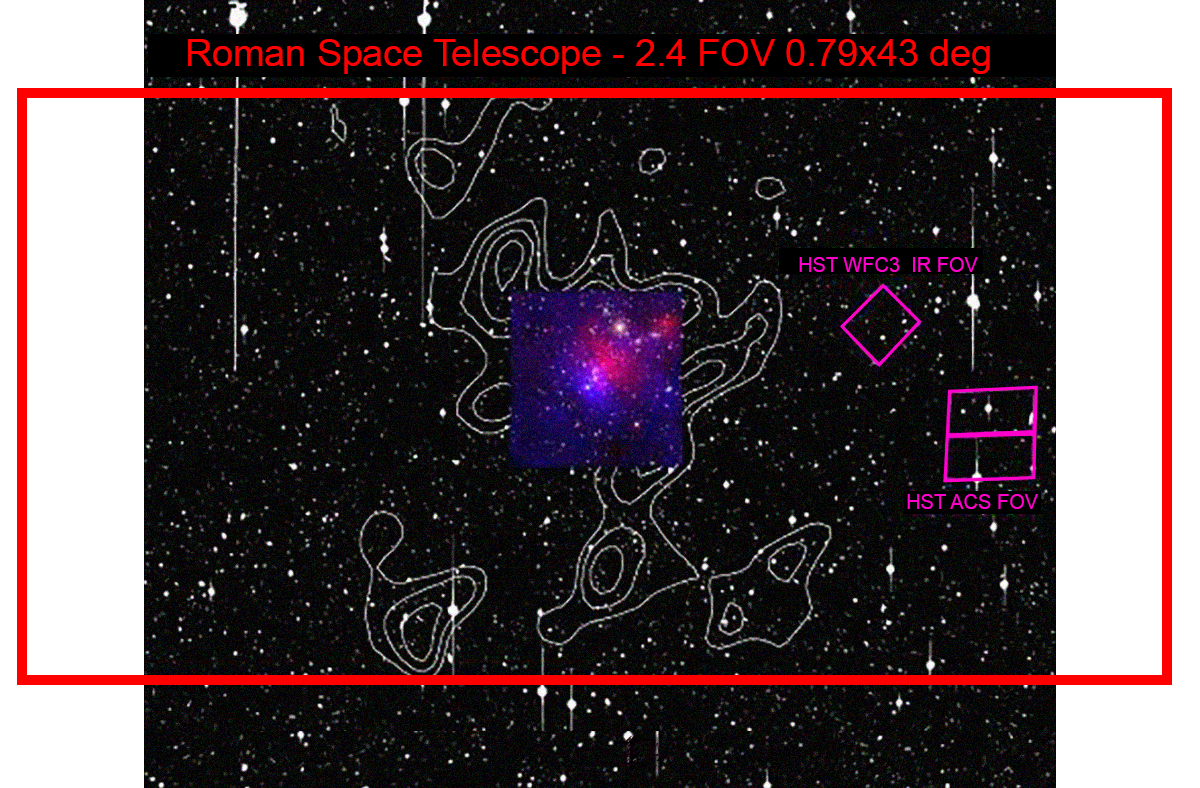Roman’s High Latitude Wide Area Survey will combine the powers of imaging and spectroscopy to unveil more than a billion galaxies. While the main goal is to study dark energy, Roman’s enormous, deep 3D images will contain so much information about the universe that astronomers will be able to research many different topics using the same vast dataset.
The First Billion Years of Cosmic History
- Astronomers usually have to choose between taking a shallow, wide-area image and capturing a very sensitive, deep image since telescope time is a precious commodity. But with Roman’s enormous field of view and infrared vision, they will be able to peer far and wide simultaneously. That will build upon narrow views of the early universe that may not be representative of this time period as a whole. Roman’s unprecedented view of cosmic ecosystems will provide a much better picture of what the early universe was like.
That includes unveiling the first generations of galaxies and quasars – brilliant beacons of intense light, each powered by a supermassive black hole. The black hole voraciously feeds on infalling matter and unleashes a torrent of radiation. Scientists expect Roman to find hundreds of faint, faraway quasars, allowing scientists to study the way supermassive black holes grow and affect their environments. Roman is also expected to detect tens of thousands of the earliest galaxies. Astronomers can comb through this dataset for the best targets for follow-up observations using the James Webb Space Telescope. With Webb’s narrower but more powerful view, scientists could study the most interesting targets in greater detail.

Mapping Dark Matter
Dark matter makes up about 27 percent of our universe, but it’s only visible through its effects on “normal” matter that we can see. Roman will fill in gaps in our understanding to help us figure out what it’s made of.
Roman’s images will reveal precise positions, shapes, and sizes of hundreds of millions of faint galaxies and probe how their appearances have been distorted by intervening mass (made of both normal and dark matter). Astronomers will use these observations to map dark matter more precisely than ever before and explore how it has changed over cosmic time. Comparing Roman’s measurements with simulations will also help scientists understand more about how structures form and how dark matter and normal matter interact.

Streams of Stars
Roman will unveil wispy streams of stars that extend far beyond the edges of many galaxies. These stellar streams form when a galaxy gobbles up a smaller group of stars. Stars drizzle out from the smaller group and trace arcs and loops around the larger galaxy until they ultimately become its newest members.
Astronomers have caught this cannibalistic process in the act using telescopes like ESA’s (the European Space Agency’s) Gaia satellite, which is fine-tuned to measure the positions and motions of stars in our Milky Way galaxy. Roman will extend these observations by making similar measurements of stars in both the Milky Way and other galaxies. The mission’s wide, sharp, deep vision should even reveal individual stars in these enormous, dim structures.
By using stellar streams to trace the Milky Way’s gravity, astronomers will explore the nature of dark matter – invisible matter that we can only detect via its gravitational effects on visible objects – is made of. One theory suggests dark matter is “cold,” or made up of heavy, sluggish particles. If so, it should clump together within galaxy halos, which would disturb stellar streams in ways Roman could see. By either detecting or ruling out these distortions, Roman could narrow down the candidates for what dark matter could be made of.
Discovering Cosmic Extremes
Roman will pinpoint rare, extreme objects, including far-flung quasars and galaxies that are rapidly forming new stars. Nowadays, galaxies tend to be massive and relatively inactive. But looking farther out into space (and farther back in time), astronomers have seen that very young galaxies tend to be small and churn out new stars at a fast pace. Roman will focus on galaxies that emit specific types of light to understand how rapidly galaxies formed stars during different cosmic eras.
Roman will also find large samples of extremely distant quasars. That will help astronomers study how the first supermassive black holes formed. It will also identify targets that other observatories such as the James Webb Space Telescope are unlikely to encounter on their own, but which they can use to trace how elements heavier than hydrogen and helium initially spread through space.
